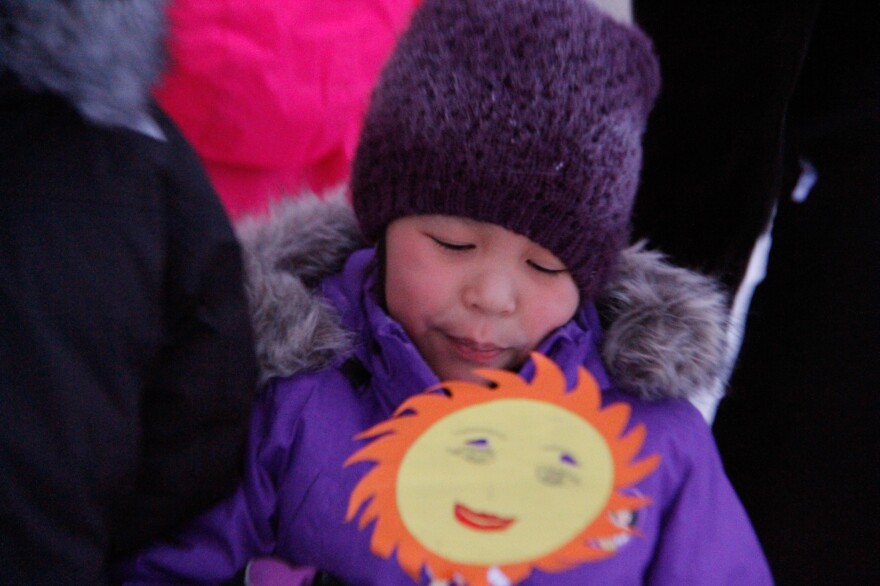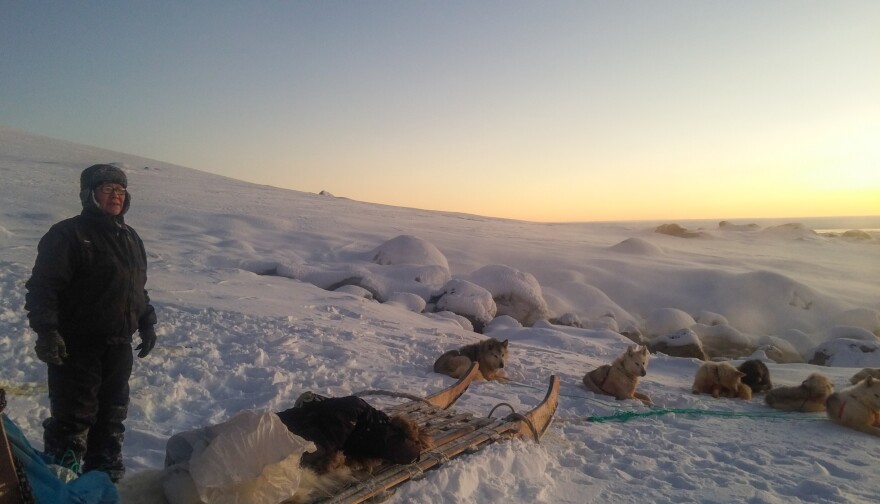On Nov. 24, the sun set in the tiny Greenlandic town of Ittoqqortoormiit. When I arrived in mid-January, it had yet to rise again.
Even for Greenland, Ittoqqortoormiit is isolated. It's considerably colder and darker than the capital, Nuuk.
"I remember my first Christmas on the west coast [of Greenland]," says Mette Barselajsen, who was born here and is raising her four kids in town. "I remember I was surprised we had the sun at Christmas. Like, too light!"

But Barselajsen insists there are no particular tricks for dealing with the dark. It's just a normal part of life.
There must be something, though, to keep a person happy without the sun. Right?
Barselajsen smiles. "I haven't seen them," she begins. "But I heard you can buy a lamp." She's talking about lamps that are supposed to provide something close to natural daylight, and she's making fun of them.
"We will not have it," she says, laughing. "It will be like, why should we stare at it? We don't need that."
That's pretty much the local mindset: How do we deal with it? We just do! Polar people don't mind!
Barselajsen acknowledges it can be depressing, especially for people who weren't born here. "I think it is very hard for them," she says. Especially in December.
"You will bring your children to school in the dark, work in the dark, pick them up in the dark," she says.

Being outside is a big part of life here, and an important part of the normal rhythms of the town. Even in the darkest, coldest part of December, the town gathers outside to celebrate the Advent and light a Christmas tree flown in from Iceland or Denmark.
A few days before the sun is due to rise, the moon is pink at noon. It's reflecting the red light of the sun, now just a few degrees below the horizon. I go to the only store, looking for something to eat. Bananas are $9 each. The milk is past its sell-by date. I buy some peanuts for $2.50 and leave. Resupply ships can make it into the fjord only twice a year, between July and September. Most food spends the long winter in deep freeze. Inevitably, June finds the shelves mostly bare.
But the meat is fresh all year round. The snowy expanses around Ittoqqortoormiit are home to musk ox, polar bears, narwhals, walruses, sea birds and seals. Even before the sun returns, 60-year-old Isak Pike takes his dog team out.
In the dark months, some hunters leave the dogs and walk out onto the frozen ocean, lone figures against an endless white backdrop, looking for the breathing holes of seals. I see them in the early morning, standing motionless with their rifles, staring down through the ice.
As the sun prepares to rise again in late January, the hunters and the polar bears both move out toward the open ocean. The day before the sun is supposed to rise in Ittoqqortoormiit, the town is full of barking as hunters load up their sleds and head out onto the ice.

And then, it's Jan. 20: the first sunrise in 58 days.
Just before noon, all the kids in town put on their snowsuits and mittens, and climb up a nearby hill. The younger ones are carrying cardboard cutouts of the sun, decorated with marker and construction paper.
At the top of the hill, they gather in a circle and sing a song for the sun. The lyrics go, "Welcome back, my dear friend. Welcome back the sun."
From this day on, each day will have 15 minutes more sunlight than the last. In two short months, the days will be 12 hours long. Ittoqqortoormiit and the rest of the Arctic are speeding away from complete darkness toward endless daylight.
Rebecca Hersher is reporting from Greenland as NPR's Above the Fray Fellow, which is sponsored by the John Alexander Project.
Copyright 2021 NPR. To see more, visit https://www.npr.org. 9(MDAxNzg0MDExMDEyMTYyMjc1MDE3NGVmMw004))








